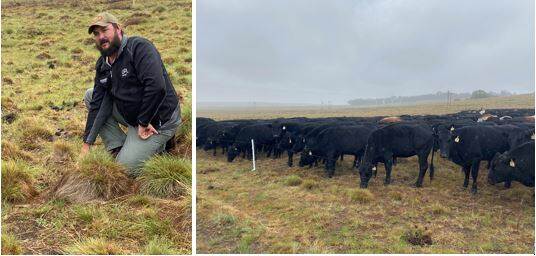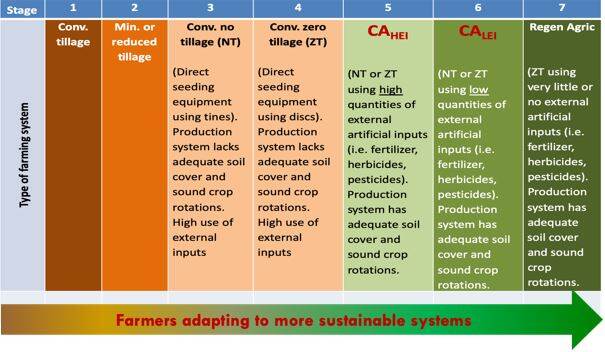The Future of Conservation Agriculture in South Africa
Integrating livestock into farming systems, paves the way towards our dot on the horizon: Regenerative Agriculture!

South Africa has a dynamic and active group of farmers, agricultural researchers and extension workers testing and promoting the use of CA principles with farmers being at the centre of the innovation. In the Netherlands, circular agriculture has become a key focus of agricultural development. As agricultural research in both South Africa and the Netherlands is highly developed, there are ample possibilities for joined research projects. Based on a constructive workshop and field visit from December 3-5, 2019 on “The role of soil C in Conservation Agriculture and carbon sequestration in South Africa” the following outline for research on CA has been developed. After a lively workshop in Bloemfontein organised by the university of the Free State (Linus Franke and Nester Mashingaidze) and Wageningen Environmental Research (Saskia Keesstra and Henk Wösten).
Conservation Agriculture (CA) is a farming system that promotes minimum soil disturbance (i.e. no tillage), maintenance of a permanent soil cover, and diversification of plant species. It enhances biodiversity and natural biological processes above and below the ground surface, which contributes to increased water and nutrient use efficiency and to improved and sustained crop production.
The following three principles apply.
1) Minimum mechanical soil disturbance (i.e. no tillage) through direct seed and/or fertilizer placement.
2) Permanent soil organic cover (at least 30 percent) with crop residues and/or cover crops. And
3) Species diversification through varied crop sequences and associations involving at least three different crops.
During the workshop in Bloemfontein, South Africa, from 3-5 December 2019, a fourth principle was identified as being crucial for successful CA implementation, namely:
4) Animal husbandry which involves including animals (cattle, sheep, chicken) in the system.
Lessons learned in South Africa
Integrating livestock into crop systems
In the past also in the Netherlands most farms had a mixed farming system, using the manure of the livestock to fertilize the arable fields. Nowadays due to specialization, optimization and heavy regulations most farms have only arable fields, orchards or livestock. Focusing on circular agriculture it is interesting to look at the way South African farmers are bringing back livestock into their annual cropping system.
In the workshop in South Africa we initially focused on the role conservation agriculture may play in climate mitigation and how these types of measures could be upscaled to large-scale as well as to small-holder farms.
In our workshop there was a strong voice to take conservation agriculture to the next level of regenerative agriculture, as the ultimate goal. However, this goal has to be reached in manageable steps.
The main insights from the workshop
- Economic and environmental sustainability is possible without subsidy
In South Africa there is no subsidy system as it exists in Europe. Therefore, any change in the management system made by a farmer must be economically viable. In the opinion of several farmers and representatives of farmers organizations present in the workshop, the best way to reach this goal is to integrate livestock in farming systems. The grazing animals reduce fertilizer input and bring income by selling the meat. Their trampling incorporates into the soil the manure and crop residues they do not eat. This increases soil carbon, soil health and biodiversity, in the soil as well as above.
2. The transition towards sustainable farming can also be slow: Every step into the direction of sustainability is a good one.
The step from conventional farming to regenerative agriculture is a too big a step for most farmers. Therefore intermediate steps need to be promoted too. Because South Africa does not have a subsidy system like in Europe, changing towards healthier food production from an environmental and human health point of view depends on the willingness and vision of each farmer.
Displayed below in a diagram, Dr. Hendrik Smith from Grain SA explained the 7 steps towards regenerative agriculture

3. Vision and love for the land: a good farmer is a steward of the land.
Most famers love their land, but may be caught in a socio-economic trap by doing as their fathers or as their neighbors. Alternative strategies that are holistic, local and custom made are needed to move into the right direction while being in reach of the farmers context. Narratives are needed to gain trust and to show that regenerative agriculture is a reachable dot on the horizon for all. Hands-on tools and knowledge should be provided enabling farmers to earn a good living from their land in a sustainable way while being respected in their community.
4. Ways to find hands-on local, but holistic solutions for every farm.
Typically these solutions will be developed in collaboration with farmers making it possible to serve public goals such as climate change mitigation through carbon sequestration in soils and biodiversity restoration; while ensuring a good livelihood for the farmer.